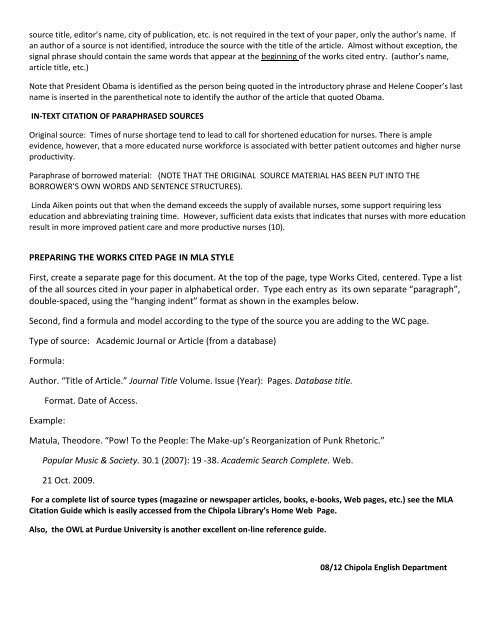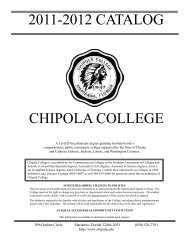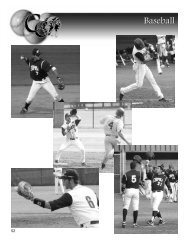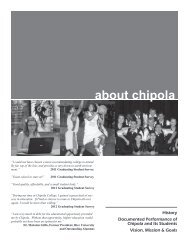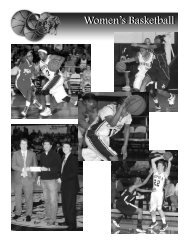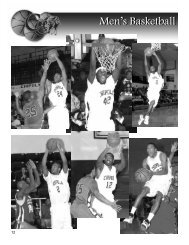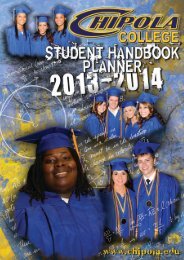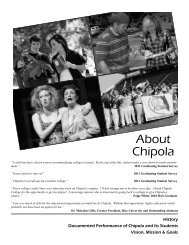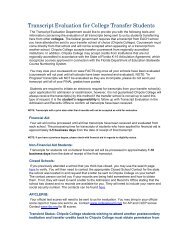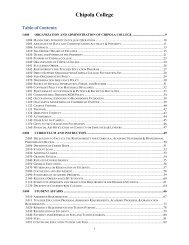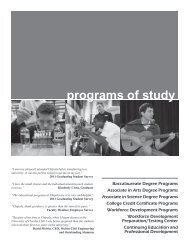MLA (Modern Language Association) Citation Quick Reference Guide
MLA (Modern Language Association) Citation Quick Reference Guide
MLA (Modern Language Association) Citation Quick Reference Guide
You also want an ePaper? Increase the reach of your titles
YUMPU automatically turns print PDFs into web optimized ePapers that Google loves.
source title, editor’s name, city of publication, etc. is not required in the text of your paper, only the author’s name. If<br />
an author of a source is not identified, introduce the source with the title of the article. Almost without exception, the<br />
signal phrase should contain the same words that appear at the beginning of the works cited entry. (author’s name,<br />
article title, etc.)<br />
Note that President Obama is identified as the person being quoted in the introductory phrase and Helene Cooper’s last<br />
name is inserted in the parenthetical note to identify the author of the article that quoted Obama.<br />
IN-TEXT CITATION OF PARAPHRASED SOURCES<br />
Original source: Times of nurse shortage tend to lead to call for shortened education for nurses. There is ample<br />
evidence, however, that a more educated nurse workforce is associated with better patient outcomes and higher nurse<br />
productivity.<br />
Paraphrase of borrowed material: (NOTE THAT THE ORIGINAL SOURCE MATERIAL HAS BEEN PUT INTO THE<br />
BORROWER’S OWN WORDS AND SENTENCE STRUCTURES).<br />
Linda Aiken points out that when the demand exceeds the supply of available nurses, some support requiring less<br />
education and abbreviating training time. However, sufficient data exists that indicates that nurses with more education<br />
result in more improved patient care and more productive nurses (10).<br />
PREPARING THE WORKS CITED PAGE IN <strong>MLA</strong> STYLE<br />
First, create a separate page for this document. At the top of the page, type Works Cited, centered. Type a list<br />
of the all sources cited in your paper in alphabetical order. Type each entry as its own separate “paragraph”,<br />
double-spaced, using the “hanging indent” format as shown in the examples below.<br />
Second, find a formula and model according to the type of the source you are adding to the WC page.<br />
Type of source: Academic Journal or Article (from a database)<br />
Formula:<br />
Author. “Title of Article.” Journal Title Volume. Issue (Year): Pages. Database title.<br />
Format. Date of Access.<br />
Example:<br />
Matula, Theodore. “Pow! To the People: The Make-up’s Reorganization of Punk Rhetoric.”<br />
Popular Music & Society. 30.1 (2007): 19 -38. Academic Search Complete. Web.<br />
21 Oct. 2009.<br />
For a complete list of source types (magazine or newspaper articles, books, e-books, Web pages, etc.) see the <strong>MLA</strong><br />
<strong>Citation</strong> <strong>Guide</strong> which is easily accessed from the Chipola Library’s Home Web Page.<br />
Also, the OWL at Purdue University is another excellent on-line reference guide.<br />
08/12 Chipola English Department


